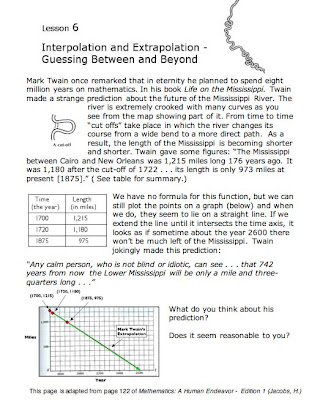Outline for Chapter 3 - Jacobs Math
Chapter 3 - Functions and their Graphs Harold Jacobs, Mathematics: A Human Endeavor Supplementary material Lessons 3.1 The Idea of a Function 3.2 Descartes and the Coordinate Graphs 3.3 Functions with Line Graphs 3.3.1 Everything You Ever Wanted to Know about Equations, Lines, Slopes, and Graphs but Were Afraid to Ask 3.3.2 Linear Equations attack the green globs on Halloween! 3.4 Functions with Parabolic Graphs 3.6 Interpolation & Extrapolation - Guessing Between and beyond




